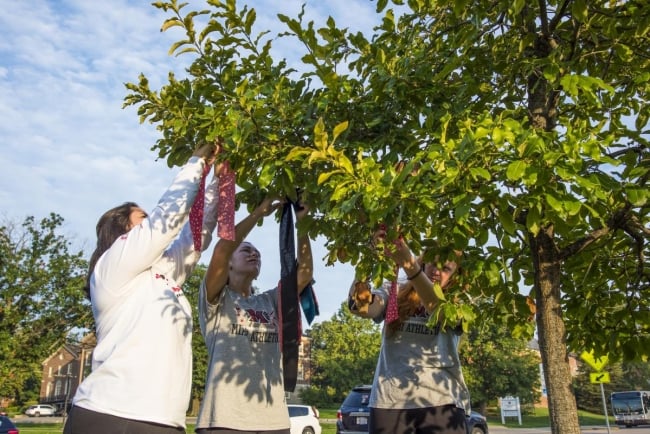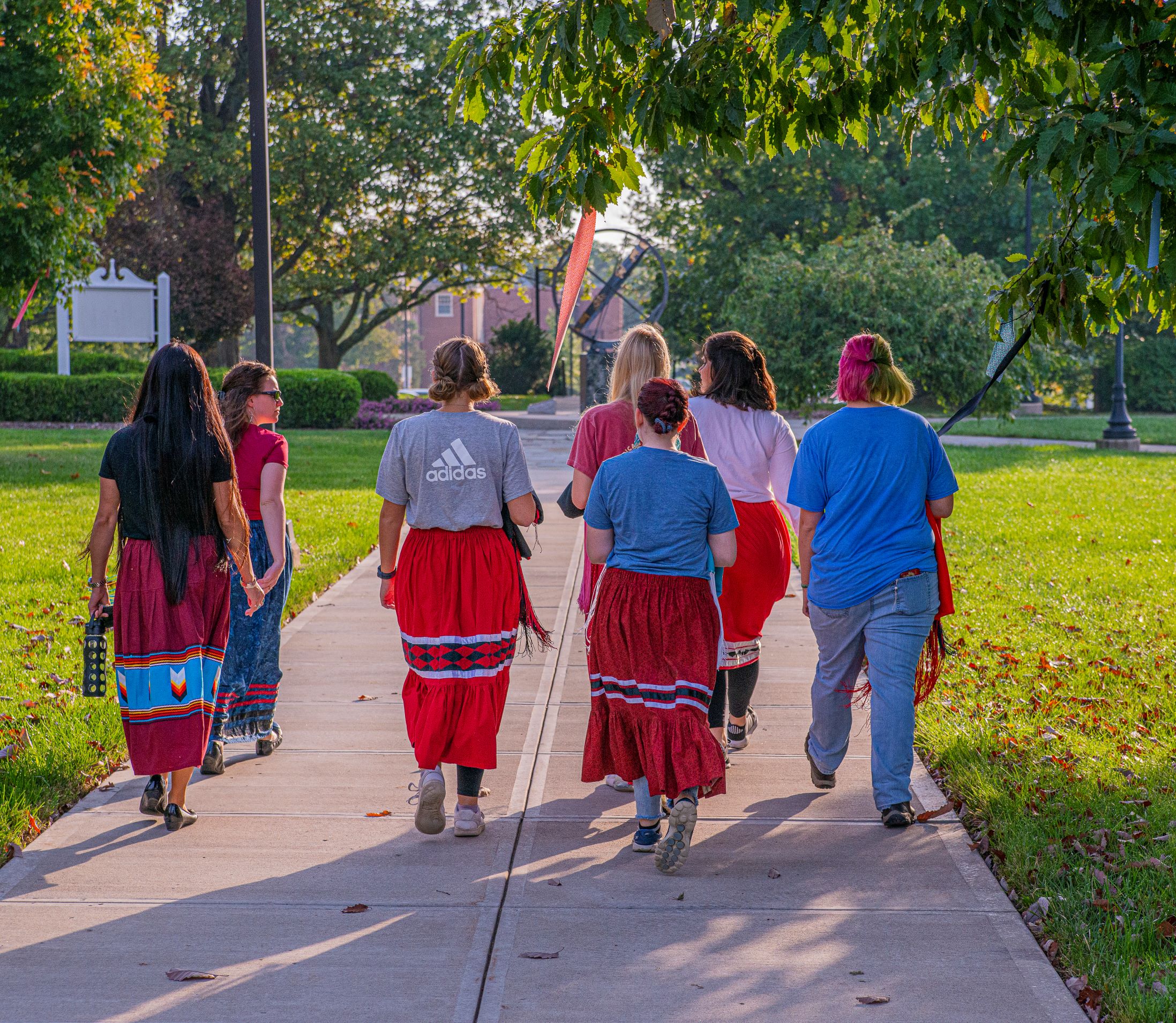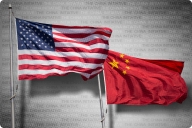You have /5 articles left.
Sign up for a free account or log in.

Miami University in Ohio enrolled a record number of students belonging to the Miami Tribe of Oklahoma this fall.
Karen Baldwin
Joshua McCoy, president of the Native American Student Association at Miami University in Ohio, always looks forward to maple sugaring season, when he goes out with classmates to tap the maple trees on campus and later boil down the sap into syrup. Taking part in the annual tradition with other members of the Miami Tribe of Oklahoma makes him feel connected to his culture.
“Getting to participate in this process that our ancestors did for hundreds of years right here on campus is super amazing,” he said of the event, which occurs between January and March.
Maple sugaring and other activities centered on Native American culture and traditions are not unusual at the university, which sits on land originally occupied by the Miami Tribe. The events were established over time as tribal and university leaders slowly began forging a relationship nearly 50 years ago. The tribe, which is also known as the Myaamia tribe, has nearly 6,000 members throughout the country, mostly concentrated in the Midwest, with tribal land holdings in Oklahoma.
The university now has 39 Myaamia students, the most ever enrolled, who receive tailored academic and financial supports. The campus also houses a center run by members of the tribe that is dedicated to the research and revitalization of the Myaamia language and culture.
The university’s Myaamia Heritage Award Program, launched in 1991, has been a big draw for tribal students. It covers tuition and fees for four years. (One year of tuition at the university usually costs $16,704 for Ohio residents and $37,380 for out-of-state students, according to the university website.) More than 100 Myaamia students have graduated from the university as a result.
Even with their record enrollment this fall, Myaamia students make up a tiny portion of the more than 16,500 undergraduates on the campus in Oxford, Ohio. Native Americans over all are about 0.1 percent of the campus student population, according to fall 2020 enrollment data.
A Bumpy Beginning
The relationship between the university and the tribe wasn’t always strong. It began when Miami Tribe chief Forest Olds visited the campus in 1972 to introduce himself to university officials and later developed amid tensions and disagreement between tribe members and campus leaders over the original name of the university’s athletics team, known as the Redskins.
Campus administrators asked the tribe to formally approve its mascot following the chief’s visit. After much debate among members, the tribe agreed. The university then worked with the tribe to make the mascot appear more authentic, with more accurate dress and dance training, but “you can’t create an authentic educational experience around a mascot that automatically ties back to stereotypes,” said Kara Strass, a tribe member and director of Miami Tribe relations at the university. The tribe signed a resolution calling on the university to change the mascot in 1996, and the Redskins became the RedHawks a year later.
Strass said the program has come a long way. Three Myaamia students attended in 1991, when financial support was the only component of the program. Students now receive regular academic advising and take heritage classes each semester—focused on tribe history, language and modern-day culture—for four years as a cohort. They’re also required to do individual senior projects using skills they’ve learned in their studies to give back to the tribal community.
“We really get to know them much more deeply than I think students who are part of clubs and organizations on campus, and part of that is because we are a kinship-based group,” Strass said. “We’re all related to one another, and that’s a big part of what we talk about with our students. We’re building this group of Myaamia family on campus, and we really try to live out the value of caring for one another because of that connection.”
Stella Beerman, a fourth-year student, said Miami University was the only institution she considered when she applied to college. She attended a Myaamia youth program as a child, where her counselors were recipients of the scholarship. Some of her cousins also attended the university.
“I know out of the thousands of kids at Miami, I’m one of, like, 40 kids that gets to really learn about my culture and just have this really unique, personal experience here,” she said.
The university gives scholars and educators working on behalf of the tribe the space and resources to conduct research at the Myaamia Center, and, in turn, the center offers activities and workshops to students campuswide. For example, the center has offered storytelling and dance demonstrations, speaker events, and lessons on traditional games and foods.

Strass partly credits the center’s student supports and heritage classes for a significant rise in Myaamia students’ graduation rates. Nationally, 41 percent of first-time, full-time Native American students who went to college in 2012 graduated within six years, compared to 62 percent of all students, according to the Postsecondary National Policy Institute, an organization focused on federal higher education policy issues. In the decade before the center existed at Miami University, the graduation rate of Myaamia students was about 44 percent, only slightly better than the national average. Today, their graduation rate is about 92 percent.
“What we have learned is that creating a culturally responsive environment that’s full of support and care for these students allows them to be academically successful in a way that they were not prior to having that in place,” Strass said.
A New Model
Other colleges and universities have recently launched initiatives to recruit and retain Native American students and to honor tribal communities. The University of Minnesota is planning to cover up to full tuition costs for the state’s Native American students starting in fall 2022. The University of Maryland held a traditional ground-blessing ceremony this month to celebrate its new dining hall, named Yahentamits in honor of Maryland’s Piscataway tribe.
Miami University and tribal leaders held a Day of Reflection on campus last month, commemorating the 175th anniversary of the tribe’s removal from its homelands in Illinois, Indiana, lower Michigan, Ohio and lower Wisconsin. Students tied hundreds of ribbons around campus symbolizing the people forced to leave. The Myaamia Heritage logo, meant to look like traditional Myaamia ribbonwork, also appears on some of the university athletic teams’ uniforms as a symbol of the partnership.
Daryl Baldwin, executive director of the university’s research center, noted that the Myaamia Center is unique as a “research and educational development arm of the Miami Tribe of Oklahoma.” The center is under the auspices of and partly funded by the tribal nation. Staff members work on behalf of the tribe.
Baldwin said when he took on his role at the center, “there were no models in the country for me to really look at.” Native American language revitalization efforts were growing nationwide, but “to contextualize that in the kind of relationship that my tribe had with this university was completely new.”
Bryan McKinley Jones Brayboy, senior adviser to the president and director of the Center for Indian Education at Arizona State University, said as far as he knows, no other university has fostered a “one-to-one” partnership with a single tribe, especially with programming “driven by the tribe.” Brayboy, a member of the Lumbee tribe, is also co-editor of the Journal of American Indian Education and the President’s Professor of Indigenous Education and Justice at ASU.
“There’s a really powerful model here to think about how you strengthen and build capacity in a community by leading with the community,” he said.
He noted that there’s been a downward trend in Native American college enrollment over at least five years because of the rising costs of college, insufficient academic preparation in tribal K-12 schools, a lack of information among Native American students about navigating the higher education system and a dearth of Native American professors to serve as guides and role models. He believes efforts like the Miami University partnership can help to address these barriers.
Students say their time at Miami University has enhanced their connection to their Native American identities.
“Through the classes, I’ve really gotten to explore what it means to be a Myaamia person and really dive into the history and really start to connect some of the dots between our culture today and what happened in the past,” Beerman said.
McCoy said he felt distant from the community growing up in Washington, D.C., but the program has given him an opportunity to explore his language and culture more deeply.
For example, he’s currently developing software to help the tribe better collect and visualize survey data about Myaamia youth as a part of his senior project. Beerman is creating a social media strategy to help the tribe connect to its members across the country.
Brayboy said Native American students tend to have better academic outcomes when they’re engaged in work that serves their communities.
“What we know about underrepresented students in higher ed is, if they can travel in cohorts and if they can travel together, they’re more likely to be successful,” he said.
McCoy believes there’s still more work to be done to make Miami University a more inclusive place for Myaamia students.
He said some alumni are still nostalgic about the old mascot and blame the tribe for its demise. His non-Native peers also sometimes question why he and other Myaamia students receive scholarships as “white-presenting people.”
“We don’t look like the stereotypical Native American that you see on mascots and whatnot,” he said. “I think there’s a general lack of understanding of the Myaamia Center and what it does and who Myaamia people are.”
Baldwin said the fact that Myaamia people have been dispersed and have married outside the tribal community doesn’t take away from their intergenerational identity. Part of the center’s work is to help students “break down those traditional definitions of race as they get applied to Indigenous people.”
He noted that, in general, K-12 schools in the Midwest offer little education about Indigenous peoples, so students come to the university with little knowledge.
Getting students to understand “that Indigenous communities are living people with a past and not a people from the past is a huge hurdle for us,” he said.
Nonetheless, Beerman said the university-tribe relationship can serve as an example for other colleges that seek to serve Native American students and reckon with their pasts.
“I think our relationship shows that these types of relationships can work really well and can be really beneficial for both the institution and the community.”









